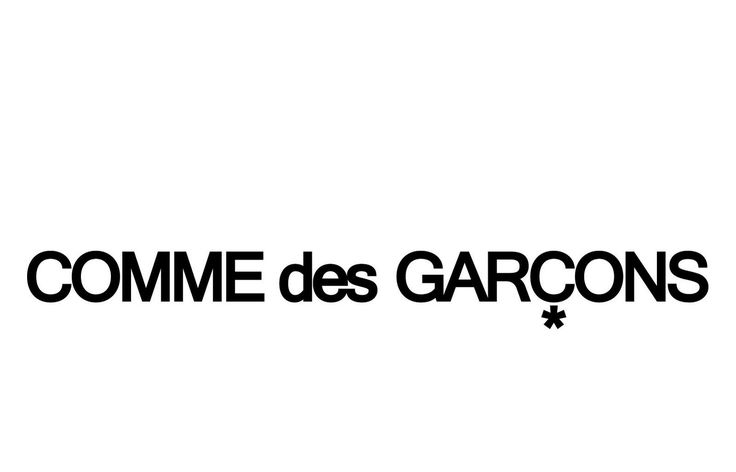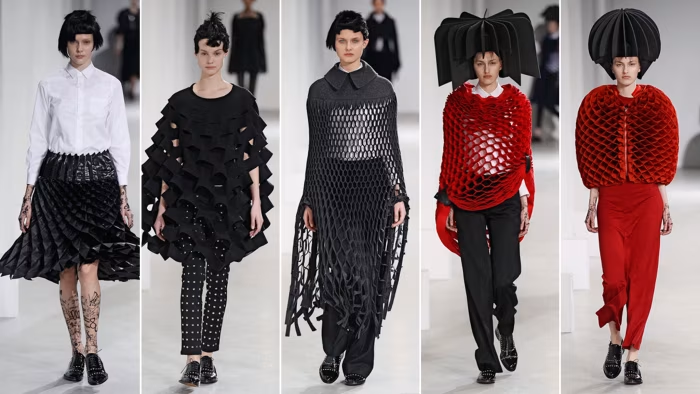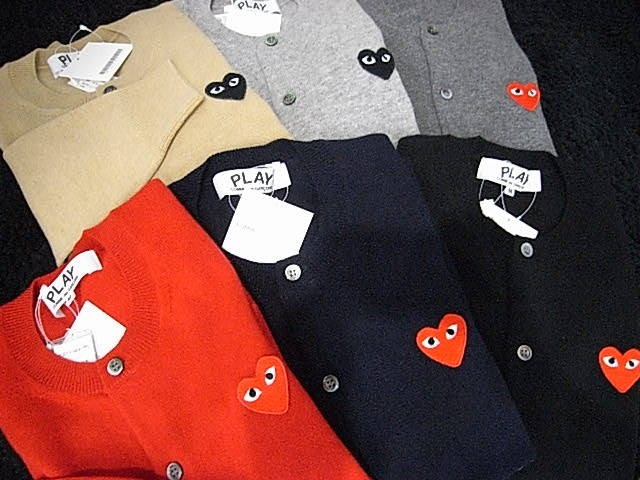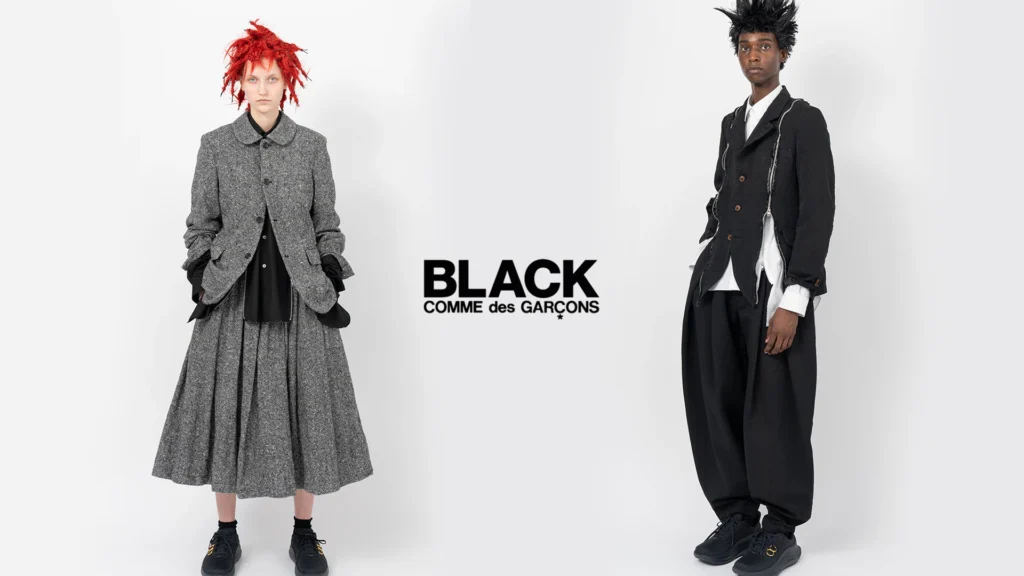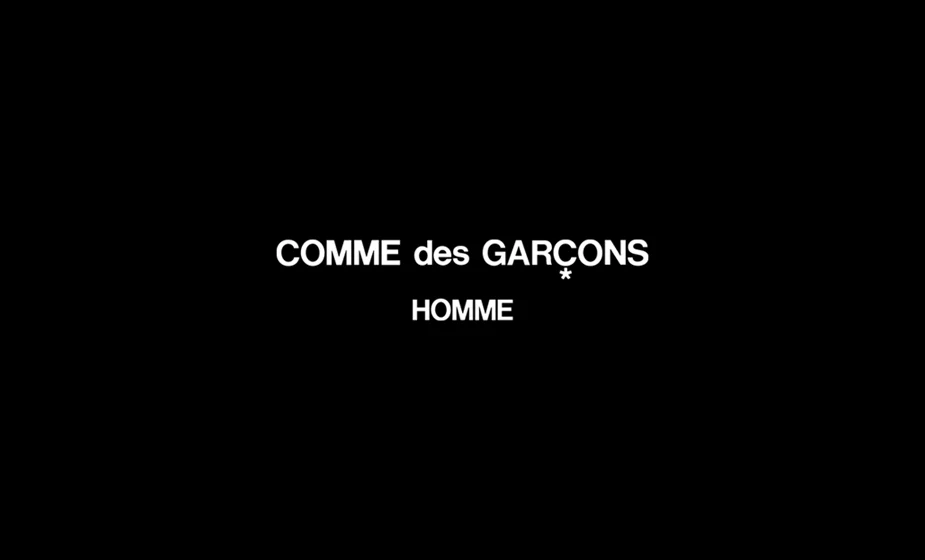Introduction: The Moment That Changed Fashion Forever
It was in 1981, the Paris fashion world recorded an event that would forever change the history of the Paris fashion world, and that is the launching of Comme des Garcons. So far, Paris had been the undisputed epicentre of fine, refined couture. However, with the arrival of Comme des Garçons, it broke all the conventions that the city had sacred.
This dark, deconstructed, and unapologetically unconventional show was referred to as the 1981 Paris shock. It was not only a fashion show, it was a philosophic statement, and it redefined what beauty, gender, and design were.
When Comme des Garcons arrived in Paris, it marked the beginning of the new era in the history of fashion – the time when avant-garde broke the traditions and worked, and Rei Kawakubo became one of the most powerful fashion designers of the 20th century.
The Background: Japan’s Rising Avant-Garde
Tokyo in the Late 1970s
Comme des Garcons had already acquired a cult following in Japan before it had its debut in Paris. Rai Kawakubo established the company in Tokyo in 1969 due to her desire to make clothes that conveyed thoughts rather than trends.
Japanese designers such as Issey Miyake, Yohji Yamamoto, and Comme des Garcons had started experimenting with a new vision of form, volume, and imperfection by the end of the 1970s. This movement confronted the Western fashion with its glamour and luxury.
Comme des Garcons was the most radical in the minimalism and emotionality of Japan. Kawakubo created monochromatic and architectural designs that did not concern ornamentation; instead her work was based on what she referred to as creation, not decoration.
The Road to Paris
By the year 1981, Comme des Garçons was prepared to share philosophy with other parts of the world. Rei Kawakubo chose to present her lineup at the Paris Fashion Week, which was a very bold step on behalf of a non-Western designer.
No one anticipated what was to take place. What Paris witnessed in the same year would be one of the most debatable and transformative in the history of fashion.
The 1981 Paris Debut: A Radical New Vision
A Stage Set for Disruption
In 1981, when Comme des Garcons started its first show in Paris, people did not know what to expect. The performance was initiated almost in silence. Asymmetrical, oversized, black clothes appeared, models walked in a thatched light with a blank face.
No tinsel fabrics, no colors, no traditional femininity, just pure, raw, and emotional demonstration of form and nothingness. It was a total denial of the Western concept of beauty.
Black Becomes a Revolution
By that time, black was thought of as gloomy and unattractive in high fashion. But it became the trademark of Rei Kawakubo. In the case of Comme des Garcons, black meant purity, strength, and honesty. It was the color of fighting back against the fashion standards, gender stereotypes, and shallow beauty.
This was the shock of the monochrome, which was uncommon to the Paris high society, who were used to the opulence and color of houses such as Dior, Yves Saint Laurent, and Chanel.
The press was not aware of how to describe what they had seen. Some called it “anti-fashion.” Some referred to it as post-apocalyptic. Everybody said: Comme des Garcons had transformed fashion forever.
The Media Reaction: The “Hiroshima Chic” Controversy
Shock and Misunderstanding
Even the European fashion press reacted in disbelief and even hostility. The critics called the appearance the Hiroshima chic, linking the worn-out clothes to the war-torn destitution.
This was a culturally insensitive label, as well as illustrating how the West had lost the philosophy of Comme des Garçons. In the case of Rei Kawakubo, her concepts were never the destruction but rebirth. She was also experimenting with the idea of imperfection, emptiness, and reconstruction, which were based on Japanese aesthetics such as wabi-sabi and ma (the beauty of space and absence).
However, in 1981, the Paris institution was not prepared to think of such things. The collection was perceived by them as an attack on their culture. But it was just the shock that Kawakubo wanted.
The Power of Rebellion
What was most perceived as disorder was, in reality, ty conceptual accuracy. Each cut, crevice, and deformation of Comme des Garcons clothes had a meaning. It challenged the question of who determines beauty – and why.
This method of philosophy was foreign to Paris. The notion that fashion could be intellectual and emotional and not decorative was groundbreaking. Comme des Garcons did not simply bring a new aesthetic, it brought in a new thinking.
Rei Kawakubo’s Philosophy: Creation Over Convention
Breaking Rules with Purpose
Rei Kawakubo has been designing with the view of challenging the status quo. During the first presentation in Paris in 1981, Comme des Garcons was a symbol of the opposition to conventions. Kawakubo was not willing to adhere to the principles of proportions, gender, or beauty.
She was celebrating authenticity and imperfection instead of celebrating luxury. Her clothes were not in harmony with the body; they spoke with the mind.
The Concept of “Anti-Fashion”
Since 1981, critics have started referring to Comme des Garcons as the head of the anti-fashion movement. Kawakubo did not give up on fashion; she rebelled against it. She intended to liberate design from business and beauty demands.
She proved that clothing can carry ideas just as a painting or sculpture could through Comme des Garcons. The idea was radical, and the influence of this idea was on generations of designers who followed her.
The Cultural Impact: A Revolution in Form
Redefining Beauty
The uncomfortable questions that the global fashion world had to face were created with the 1981 Paris debut. Would beauty be an asymmetry? Is it possible that torn cloth symbolizes power? Could black express emotion?
Comme des Garçons responded to all these in the affirmative. The collections of the brand made people observe the beauty of imperfection and believe that fashion is a developing dialogue.
This was the redefinition of beauty that was a new age, the one that appreciated individuality and imperfection more than the glamour that is common.
Inspiring a New Generation
The influence of Comme des Garcons went way beyond that initial Paris exhibition. Rei Kawakubo has influenced designers such as Martin Margiela, Ann Demeulemeester, and Demna Gvasalia.
The Japanese designers were also exposed to the world arena through their debut, and it served to show that avant-garde fashion could be non-European.
DNA of Comme des Garcons is everywhere nowadays, in deconstructed street clothes and minimalistic couture.
The Evolution After the Shock
From Rejection to Reverence
Comme des Garcons remained controversial after the 1981 show. However, with time, the world has even caught up to the vision of Kawakubo. What was previously outrageous was iconic.
By the late 80s, the Comme des Garcons brand became associated with an intellectual design whose influence had trickled down to design, art, and architecture.
Expanding the Universe
Rei Kawakubo added sub-labels to the Comme des Garcons brand, including Comme des Garcons Homme Plus, Comme des Garçons SHIRT, and Comme des Garçons PLAY. They explored various extremes in terms of concept and wearability, but they all adhered to the same philosophy of the brand, of creative freedom.
Nowadays, one can still feel a hint of that debut store in 1981 in every Comme des Garçons collection – reminding the viewer of the time when fashion came back to life.
The Legacy of the 1981 Paris Shock
Changing How Fashion Thinks
Comme des Garcons debuted in 1981, can be said to have transformed not only the fashion style but also the intellectual basis of fashion. It brought the concept of clothing being a medium of abstract thinking, emotion, and identity.
That show brought a new type of designer, one who did not look at clothing as a product, but as a philosophical statement.
From Controversy to Canon
What the critics in Paris considered ugly is on exhibition in museums. Rei Kawakubo has been honored with exhibitions worldwide, most recently at the Metropolitan Museum of Art in 2017, in their retrospective, Rei Kawakubo/Comme des Garcons: Art of the In-Between.
This perception helps to realize that the Comme des Garcons shock of 1981 was not a revolt against fashion; it was its development.
Why the 1981 Show Still Matters Today
The Continuing Relevance of Comme des Garçons
Over forty years later, the influence of that 1981 Paris debut still has its impact on modern design. All the collections of Comme des Garcons continue to uphold the same spirit of originality, integrity, and bold creativity.
Comme des Garcons is a beacon of authenticity in a business that is usually motivated on a commercial basis- evidence that the innovation starts when you have the guts to be misinterpreted.
Lessons for the Modern Fashion World
The Paris shock in 1981 teaches us that change is a necessary evil. Comme des Garcons showed the world that there are no eternal rules and there is such a thing as fashion as a cultural and philosophical dialogue.
The heritage of Comme des Garcons seems more timely today, as the themes of diversity, identity, and sustainability dominate the discussion when it comes to fashion.
Conclusion: The Shock That Shaped Modern Fashion
One of the greatest events in modern fashion history is the Paris introduction of Comme des Garcons in 1981. It questioned all: beauty, gender, proportion, and meaning.
The opinion was transformed into indignation and bewilderment, the principles of a new aesthetic were based on the basis of honesty, flaw, and intellectual richness.
Comme des Garçons, designed by Rei Kawakubo, simply did not follow the rules of fashion; it redefined them.
Even now, more than forty years later, the world still experiences the aftershocks of that revolution, which is the testimony of the strength of the idea that dared to look like no other.


